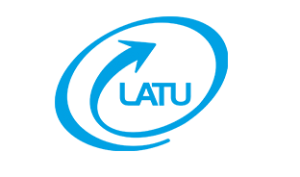What is GHS?
The Globally Harmonized System of Classification and Labeling of Chemicals (GHS) establishes harmonized criteria for classifying substances and mixtures with respect to their physical, health and environmental hazards. It also includes harmonized elements for hazard communication, with requirements for labeling, pictograms and safety data sheets. The criteria established in the GHS are based on what is described in a document called the Purple Book.
Who is the EMS aimed at and what matrices does it include?
The GHS applies to all chemical products, except those products that are regulated through their own laws or regulations: pharmaceuticals, food additives, cosmetics and pesticide residues in food.
The target audience of the system is consumers of chemicals, workers related to the transportation sector and emergency services.
Projects
Project “Training and Capacity Building for the Implementation of the Globally Harmonized System of Classification and Labeling of Chemicals (GHS) in Uruguay”.
- The GHS is an international standard for the classification and communication of chemical hazards. It ensures that this information is available to workers and consumers in a harmonized and understandable format (on labels and safety data sheets, SDS), in order to improve chemical safety in the relevant sectors and the protection of human health and the environment.
- In Uruguay, Decree 307/09 on the “Protection of Workers’ Health and Safety against Risks related to Chemical Agents at Work”, prepared by the Ministry of Labor and Social Security (MTSS) jointly with the Plenario Intersindical de Trabajadores y Convención Nacional de Trabajadores (PIT CNT) and the Asociación de Industrias Químicas del Uruguay (ASIQUR), constitutes the first legal reference that introduces the GHS in Uruguay by requiring manufacturers, importers and suppliers of chemical products to provide labels and safety data sheets in accordance with the GHS.
- To date, the Second National Workshop on Chemical Hazards Communication has been held with the participation of Vera Barrantes for UNITAR, Rosa García Couto for UNECE, Ambassador Michel Coquoz of the Swiss Embassy in Uruguay, National Authorities and Representatives of the 4 main Sectors identified by the GHS: industry, agriculture, transport and consumers.
- A Situation and Gap Analysis for the implementation of GHS in Uruguay was carried out through surveys of the sectors involved. This allowed identifying the strengths, weaknesses and driving forces that Uruguay has to carry out the GHS implementation process.
- One of the main gaps identified is the need for training in order to comply with Decree 307/09. To this end, a training program and an audiovisual was prepared, aimed at potential instructors of the Plenario Intersindical de Trabajadores, Comisión Nacional de Trabajadores (PIT CNT), in charge of training workers from different industries (chemical, metallurgical, textile, agricultural, etc.) at the national level.
- The audiovisual “Training for the Responsible Management of Chemical Substances in Uruguay” was presented in September 2010, in the auditorium of the Ministry of Housing, Land Management and Environment (MVOTMA). It was attended by the Ambassador of Switzerland in Uruguay Mr. Hans-Ruedi Bortis, National Authorities (MVOTMA, Ministry of Labor and Social Security, Ministry of Public Health), representatives of the Occupational Health and Environment Commission of the PIT CNT and unionized workers.
- The DVD was considered a very useful tool that complements the work being carried out by the PIT CNT (within the framework of the SAICM project) to train workers in risk prevention and safe handling of chemical products.


